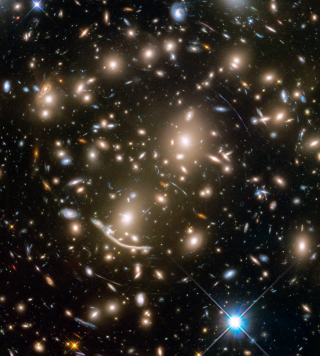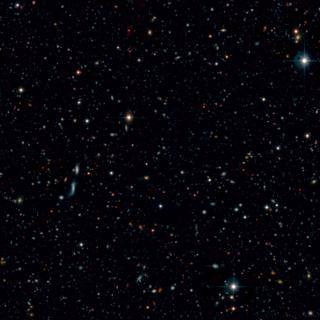Bibcode
López-Sanjuan, C.; Tempel, E.; Benítez, N.; Molino, A.; Viironen, K.; Díaz-García, L. A.; Fernández-Soto, A.; Santos, W. A.; Varela, J.; Cenarro, A. J.; Moles, M.; Arnalte-Mur, P.; Ascaso, B.; Montero-Dorta, A. D.; Pović, M.; Martínez, V. J.; Nieves-Seoane, L.; Stefanon, M.; Hurtado-Gil, Ll.; Márquez, I.; Perea, J.; Aguerri, J. A. L.; Alfaro, E.; Aparicio-Villegas, T.; Broadhurst, T.; Cabrera-Caño, J.; Castander, F. J.; Cepa, J.; Cerviño, M.; Cristóbal-Hornillos, D.; González Delgado, R. M.; Husillos, C.; Infante, L.; Masegosa, J.; del Olmo, A.; Prada, F.; Quintana, J. M.
Bibliographical reference
Astronomy and Astrophysics, Volume 599, id.A62, 24 pp.
Advertised on:
3
2017
Journal
Citations
21
Refereed citations
21
Description
Aims: Our goal is to study the evolution of the B-band luminosity
function (LF) since z 1 using ALHAMBRA data. Methods: We used
the photometric redshift and the I-band selection magnitude probability
distribution functions (PDFs) of those ALHAMBRA galaxies with I ≤ 24
mag to compute the posterior LF. We statistically studied quiescent and
star-forming galaxies using the template information encoded in the
PDFs. The LF covariance matrix in redshift - magnitude - galaxy type
space was computed, including the cosmic variance. That was estimated
from the intrinsic dispersion of the LF measurements in the 48 ALHAMBRA
sub-fields. The uncertainty due to the photometric redshift prior is
also included in our analysis. Results: We modelled the LF with a
redshift-dependent Schechter function affected by the same selection
effects than the data. The measured ALHAMBRA LF at 0.2 ≤ z< 1 and
the evolving Schechter parameters both for quiescent and star-forming
galaxies agree with previous results in the literature. The estimated
redshift evolution of MB* ∝ Qz is
QSF = -1.03 ± 0.08 and QQ = -0.80 ±
0.08, and of log 10φ∗ ∝ Pz is
PSF = -0.01 ± 0.03 and PQ = -0.41 ±
0.05. The measured faint-end slopes are αSF = -1.29
± 0.02 and αQ = -0.53 ± 0.04. We find a
significant population of faint quiescent galaxies with MB
≳ -18, modelled by a second Schechter function with slope β =
-1.31 ± 0.11. Conclusions: We present a robust methodology
to compute LFs using multi-filter photometric data. The application to
ALHAMBRA shows a factor 2.55 ± 0.14 decrease in the luminosity
density jB of star-forming galaxies, and a factor 1.25
± 0.16 increase in the jB of quiescent ones since z =
1, confirming the continuous build-up of the quiescent population with
cosmic time. The contribution of the faint quiescent population to
jB increases from 3% at z = 1 to 6% at z = 0. The developed
methodology will be applied to future multi-filter surveys such as
J-PAS.
Based on observations collected at the German-Spanish Astronomical
Center, Calar Alto (CAHA), jointly operated by the Max-Planck-Institut
für Astronomie (MPIA) at Heidelberg and the Instituto de
Astrofísica de Andalucía (CSIC)
Related projects

Galaxy Evolution in Clusters of Galaxies
Galaxies in the universe can be located in different environments, some of them are isolated or in low density regions and they are usually called field galaxies. The others can be located in galaxy associations, going from loose groups to clusters or even superclusters of galaxies. One of the foremost challenges of the modern Astrophysics is to
Jairo
Méndez Abreu

Evolution of Galaxies
Galaxy evolution is a crucial topic in modern extragalactic astrophysics, linking cosmology to the Local Universe. Their study requires collecting statistically significant samples of galaxies of different luminosities at different distances. It implies the ability to observe faint objects using different techniques, and at different wavelengths
Jorge
Cepa Nogue